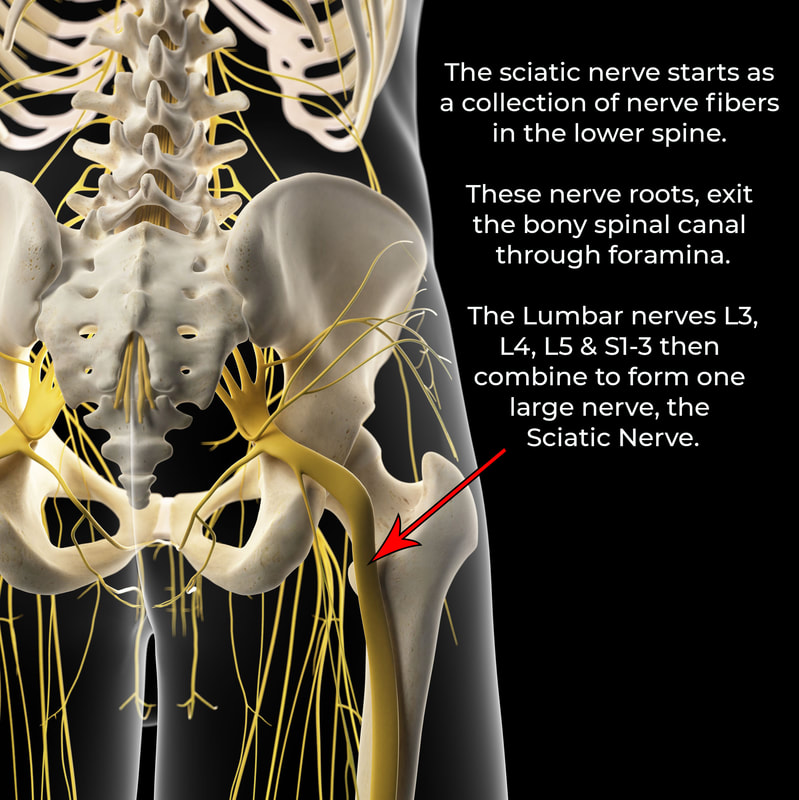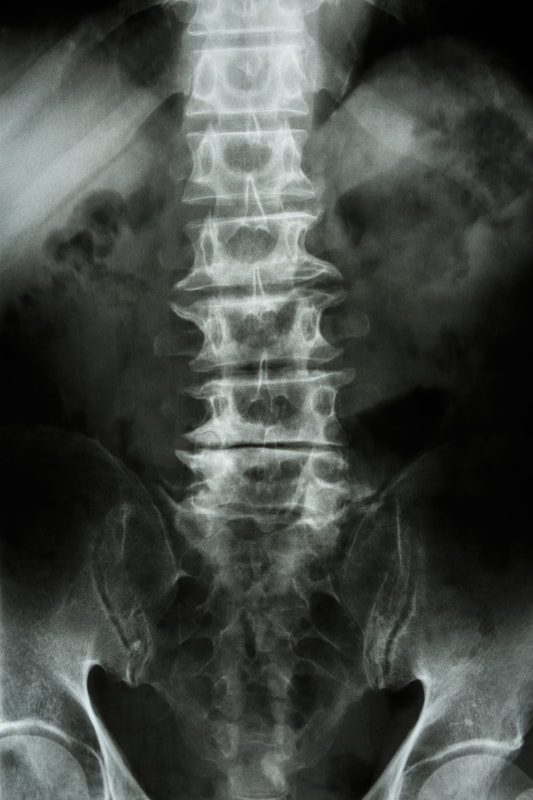Do you have Sciatica?Symptoms of sciatica can present in varied ways. Many of which are the longterm outcome of abnormal mechanical loading and stress on specific areas of the body. One of the common areas of high mechanical stress is the base of the spine. (Take a look at the x-ray below, notice how the vertebrae look a relatively decent shape at the top of the image compared to the bottom. You can appreciate how the degeneration in this person's spine will be reflected in how they stand and their ability to walk and generally move about.) If you are one of the many people who have developed this condition it is likely that your healthcare practitioner has informed you of the cause. X-rays and MRI scans accurately pin point a diagnosis, commonly a lumbar disc bulge/herniation, degenerative disc disease, spondylolisthesis, spinal stenosis and such like. These conditions describe what is going on at a highly specific spinal level (classically L5) and explain why you are in pain, but what about why this area got so bad? What's going on with your body as a whole? Looking at the whole body will explain the underlying reason these specific levels of your spine are more worn out. When it comes to treatment for both pain relief and long term resolution, it is vital to take in the bigger picture of what and why your spine is in the condition it is in by looking at your body as a whole structure. What condition is your spine in?
The many forms of SciaticaSciatica is often characterized by one or more of the following symptoms:
Be Proactive...2 easy changes that will make a start to shifting your sciatic pain.
It goes without saying that sciatica is much easier to treat earlier rather than later. Heed the early warning signs such as muscle spasms, waking up with a stiff, sore back and when the back is pulled into an antalgic (skewed) posture.
If you would like to find how well I can help you get in touch with me. Comments are closed.
|
AuthorSarah Bedford Recent PostsCategories
All
|



 RSS Feed
RSS Feed


